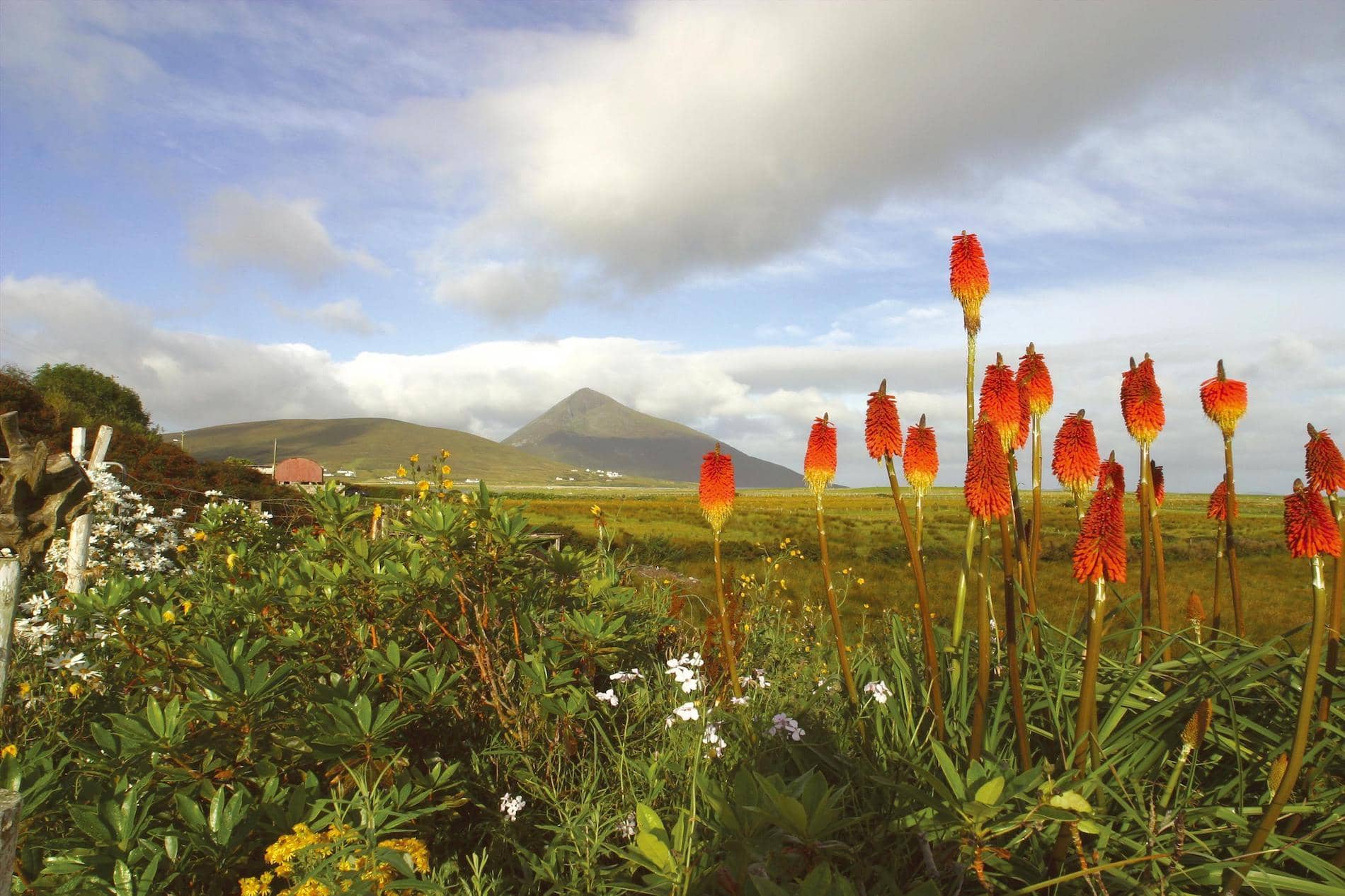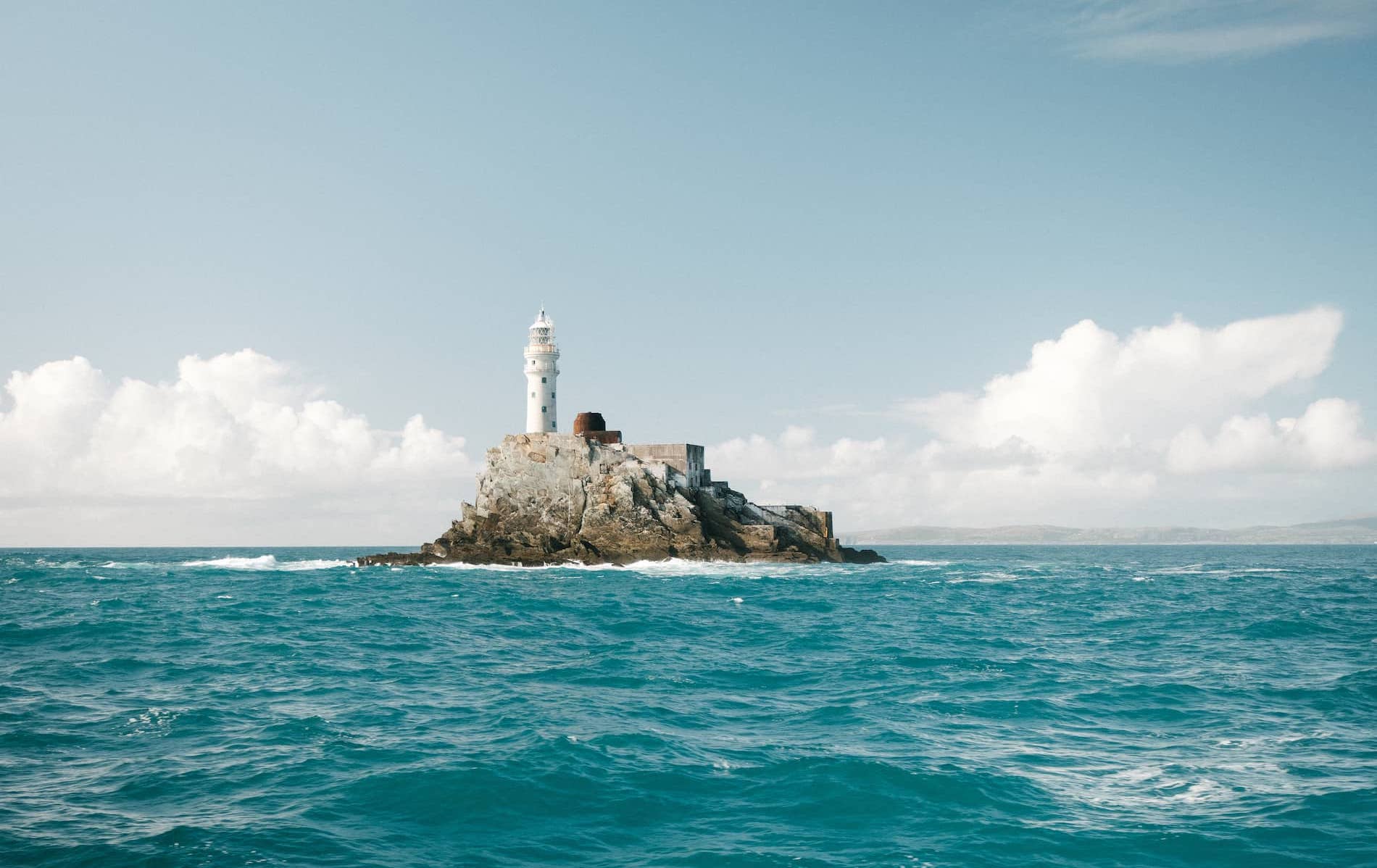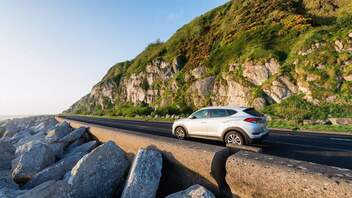
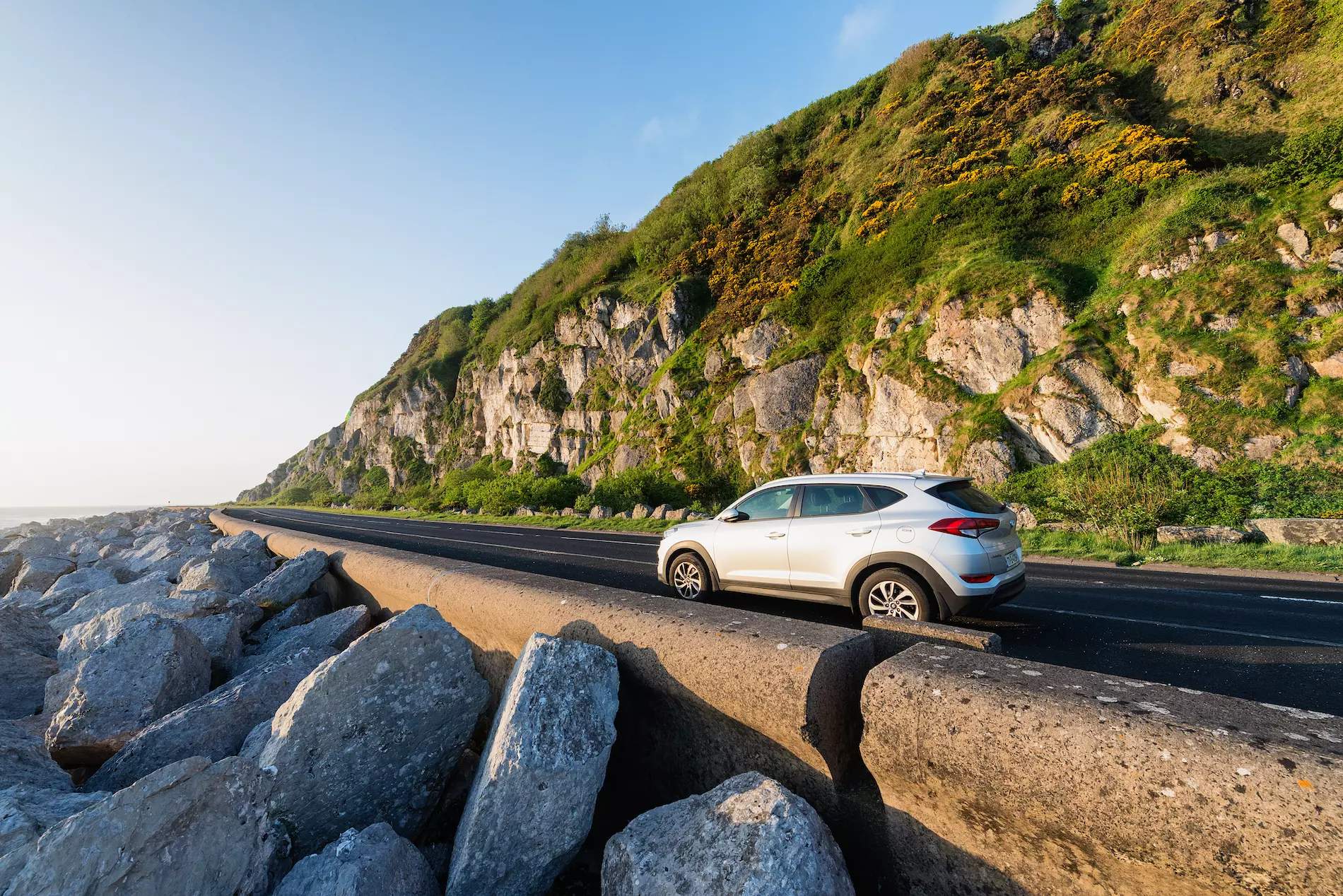
Driving in Ireland
What's on this page?
If you’re going to be driving on your trip to Ireland, you’ll need to know the basics. So we’ve put together this handy guide that covers everything from the laws in both the Republic of Ireland and Northern Ireland to helpful tips and useful links to official bodies where you can get more information.
5 top tips
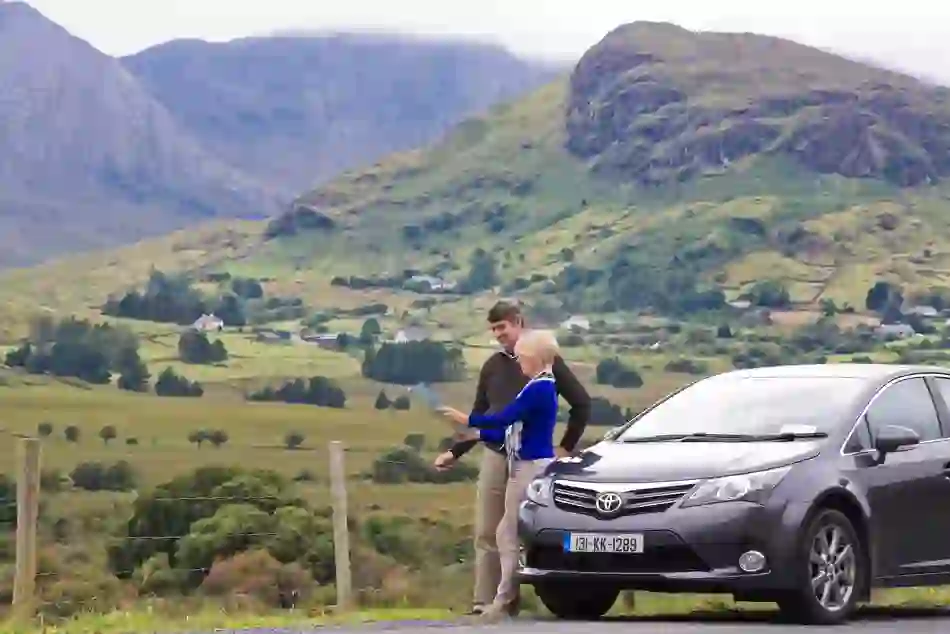
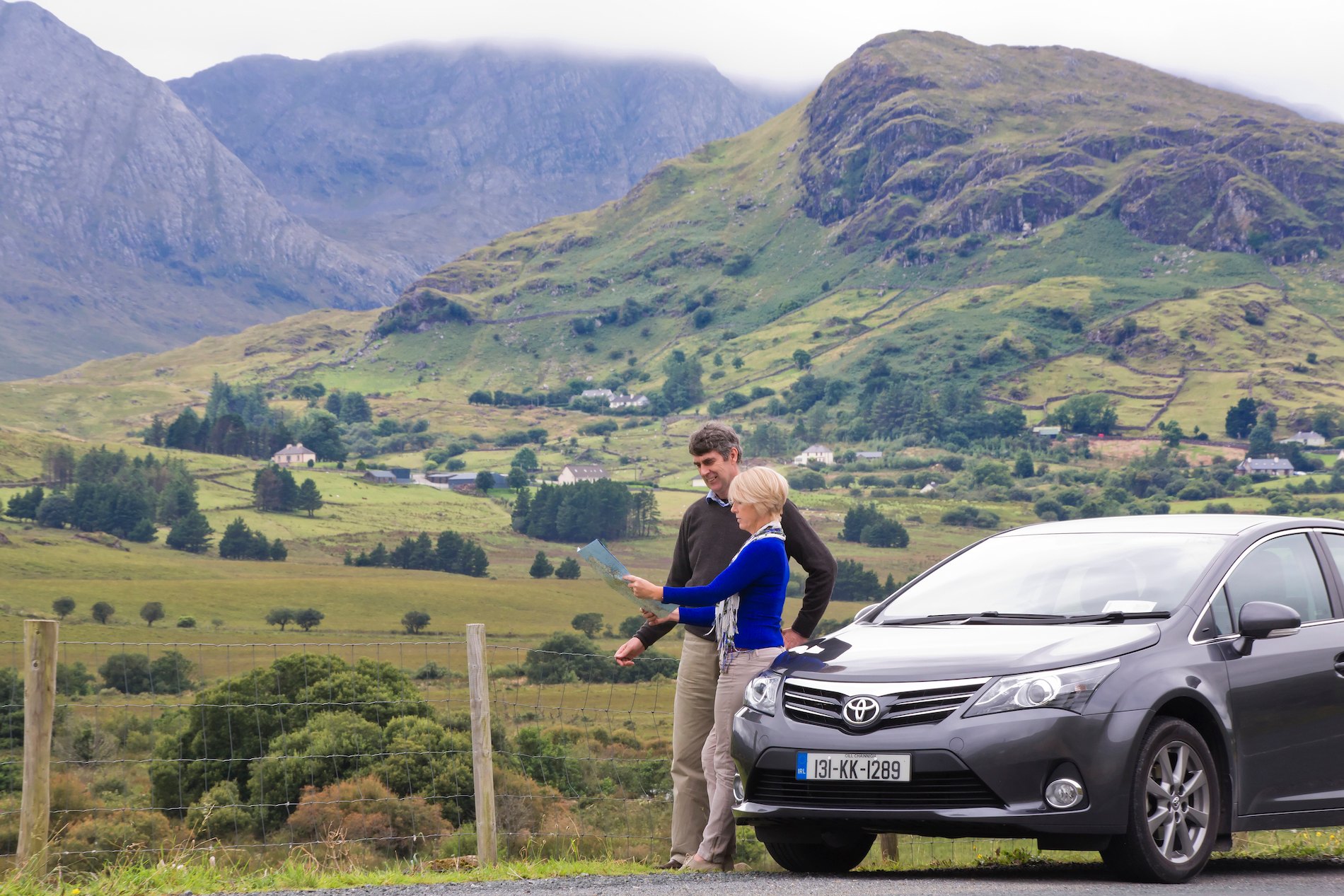
Roads in Ireland
Roads in Ireland are generally of a high standard. They range from motorways and dual carriageways to secondary roads with two-way traffic and winding country lanes.
In the Republic of Ireland, motorways are prefixed with an “M” (for example, the M50 ring road around Dublin city). National roads are prefixed with an “N” (for example N18). Secondary roads may also be dual-carriageways or have two way traffic.
Roads in Northern Ireland are prefixed with an “M” for motorway; an “A” and a “B” for primary and non-primary roads. Signs in the Republic of Ireland show distances in kilometres, while in Northern Ireland miles are used.
Driving laws
We drive on the left hand side of the road in Ireland.
Everyone in your vehicle (front and back) MUST wear a seat belt at all times.
Riding a motorcycle? Both you and your passenger must wear helmets.
Ireland has strict laws against driving under the influence of alcohol or drugs and the penalties for breaking these laws are stiff.
Never use your mobile phone while you're driving.
Licence and insurance
You’ll need either a valid, full national driving licence or an international driving permit to drive in Ireland. In the Republic of Ireland, you must carry your driver’s licence at all times.
You must also have car insurance either in your own name or as a named driver on another’s policy. EU-registered vehicles will need to carry a green card (as proof of motor insurance) for all vehicles, including caravans and trailers if driving in Northern Ireland or planning to cross the border between Northern Ireland and the Republic of Ireland.
UK-registered vehicles (with valid insurance) will not need a Green Card to drive in Ireland or from Northern Ireland to the Republic of Ireland. If you’re renting a car, the Car Rental Council of Ireland can give you advice on the kind of insurance, waivers and options that will suit you.
Toll roads
There are no tolled roads in Northern Ireland but you’ll find tolls on a number of roads in the Republic of Ireland. They’re managed by Transport Infrastructure Ireland and Dublin City Council. Generally, you can pay tolls at the toll booth, however, there is one exception: M50 eFlow Barrier System.
M50 eFlow Barrier System
There is a barrier-free toll system in operation on the M50 ring road around Dublin. So instead of paying your toll at a toll booth, the system will record your trip by photographing your licence plate number. It is important to pay your toll before 8pm the next day, either online, via the app for Apple or Android, or in branded Payzone outlets. Disabled drivers are not charged tolls on roads in the Republic of Ireland.
Fuel
You’ll find plenty of service stations, particularly on main routes. Fuel prices will vary between service stations and if you’re travelling between Northern Ireland and the Republic of Ireland, you’ll notice that fuel prices are given in euro in the Republic and pounds in Northern Ireland.
Almost all service stations accept credit cards as well as cash. Just fill up at the pump and then head into the station to pay. Some stations may have self-service pumps where you can just pay and go.
Electric vehicles are growing in popularity in Ireland and you’ll find charging points all around the Republic of Ireland and Northern Ireland.
Speed limits: Republic of Ireland
Speed limits: Northern Ireland

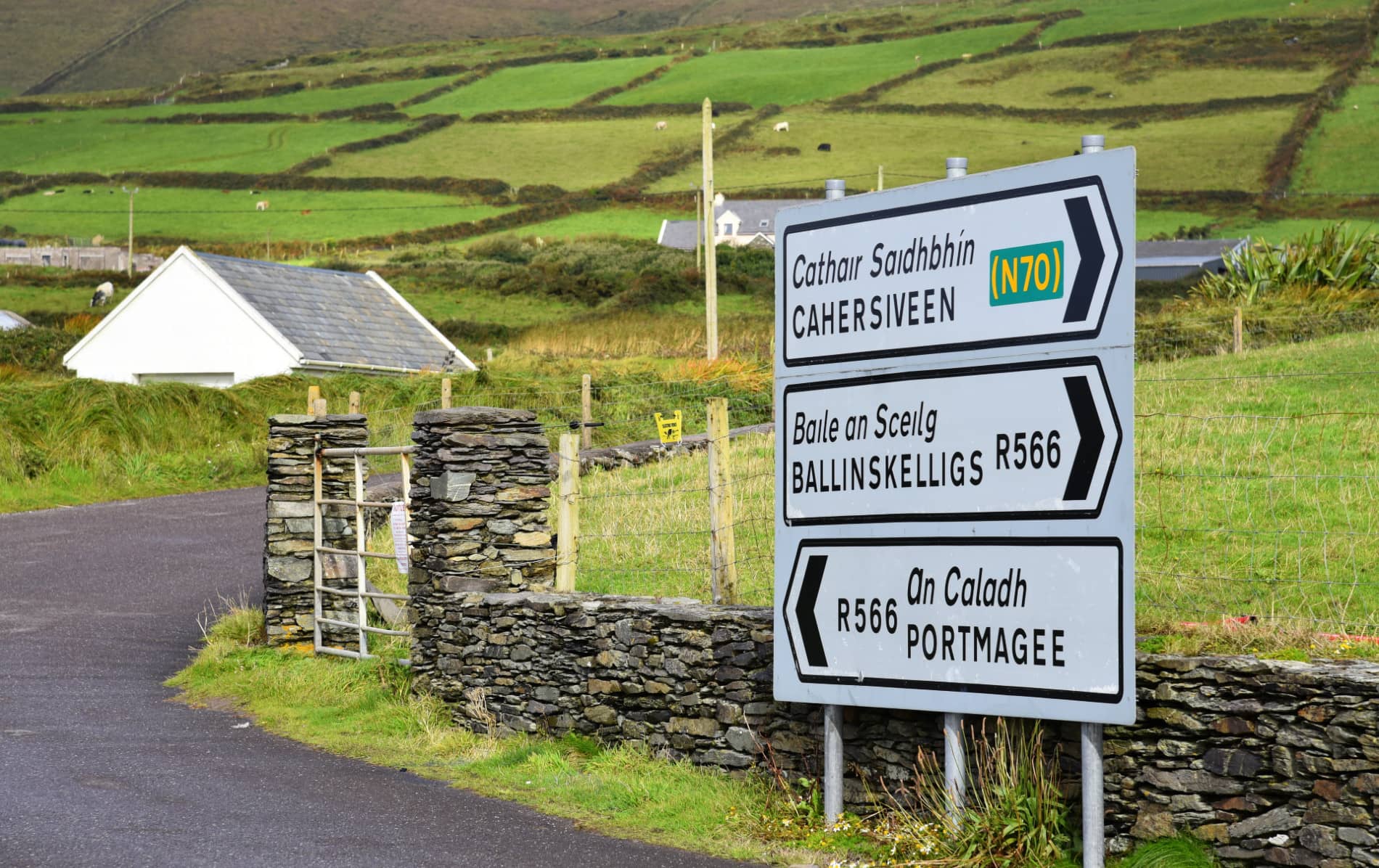
Signposts
In the Republic of Ireland, road signs show distances and speed limits in kilometres. Road signs and place names are displayed in both Irish (Gaelic) and English. In Gaeltacht areas (where Irish is the primary language) only Irish is used.
Signposts and speed limits in Northern Ireland are in miles and miles per hour, while all place names are displayed in English only.
Parking
You will need to pay for parking in many places in Ireland. Look for street signs showing parking information for guidance. You can pay for parking using:
1. Coins in the Pay and Display machine on the street.
2. Parking Tag or Park by Text in the Republic of Ireland and Park by Text in Northern Ireland.
3. Some car park management companies have their own apps for cashless parking so check for signs in the car park.
Parking for people with disabilities
If you have an EU Parking Permit for People with Disabilities, you can use this in any vehicle in which you’re travelling. UK Blue Badges and Australian and New Zealand Disability Parking Permits can also be used on the island of Ireland. Contact the Disabled Drivers’ Association of Ireland for more information on parking in the Republic of Ireland and the Blue Badge Unit for information on parking in Northern Ireland.
Useful links
AA Route Planner
Up-to-date traffic information and a route planner that recommends the best route to get you to your destination.
NI Direct Motoring
Road safety, insurance and licences, towing a caravan... it's all here on Northern Ireland's official government website.
Transport Infrastructure Ireland
Toll information and traffic news from the national body that manages the Republic of Ireland's transport network.







